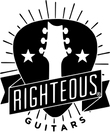Effects Loops...What Are They Good For?!
Effects Loops....What Are They Good For??
Some amplifiers have a feature called an "effects loop" integrated into their design. Over the years I have heard many comments about their use and why one would want to use one to begin with. Today we will try to demystify this useful tool by explaining what it is and how to use it. Keep in mind that some may prefer the more "raw" tone that comes by not utilizing an effects loop.
So, how does it work? Your amplifier has three basic parts:
- The Preamplifier. This is where the low powered signal coming from your guitar gets brought up to a useable level, tone shaped, and pushed out to the next part of the amp, the power amp. Consider the front (or top) of the amp and all the knobs there. This is where all the preamp gain or drive gets added in and the EQ (treble, middle, bass, and so on) gets manipulated. After all this happens, the manipulated tone goes out to the next section, the power amp.
- The Power Amplifier. This part of the amp takes the signal from the preamp and beefs it up in order to provide enough power to push the speakers. No tone shaping (presence and resonance excluded) is directly taken place here. There is tone to be had here it is affected by how hard the amp is pushed and tube type. We will cover more on this at a later date.
- The Speaker. This motor takes the powered signal and converts it to audible and rocking tone! There is a lot to talk about when it comes to speakers and choosing the right ones, but that is for another day.
So the amp looks like this:
PREAMP----POWER AMP----SPEAKER
Today we are concerned with the first two parts of an amp. The effects loop is simply a way to put an effect in between the preamp and power amp, like this:
PREAMP----EFFECTS LOOP----POWER AMP----SPEAKERs
It is quite literally a loop. There will be a SEND (or preamp out) and a RETURN (or power amp in). This allows you to place any effect you want AFTER the preamp and BEFORE the power amp. This will allow you to tone shape your signal BEFORE it gets to that effect. Now.....why would you want to do that?
The easiest way to think about this is to consider an echo effect. Think about your guitar running into this echo and then hitting the preamp. You have a great, overdriven lead tone dialed in. Now you turn on the echo and now your guitar is getting lost because every echo is getting more and more distorted. Not very articulate, especially at high volume! Plus the echos are coming in pre-eq too.
Now put that echo effect in the effects loop. Now your guitar is getting overdrive from the preamp, getting that perfect eq, and going out into the echo. So each echo does not get more distorted but simply repeats what you played with all the drive already there and all the eq dialed. It will sound much more refined and cleaner.
With that being said, not all effects should go in the loop. An overdrive or distortion pedal for example, are designed to push the amplifier's preamp in order to get more distortion out of it. Putting them in the loop would not perform as well.
All time based and most modulations will go in the effects loop. If you want to use a boost to push the amp into overdrive, run it up front. If you want an actual volume boost, place it after the preamp, in the effects loop.
Parallel Vs. Series: A series effects loop is very simple. Send goes out to the effect input and return comes back to the amp from the effect output. With a parallel loop, there will be some form of mix available. In this case you can use the mix controls to decide how much of the effect you want mixed with your original signal.
Hopefully this helps explain the effects loop in a fairly digestible way. Again, not everyone likes to use an effects loop. Running everything into the front of the amp will be a more raw experience. After all, there were no effects loops in the 50s and 60s!
